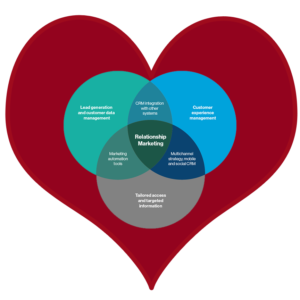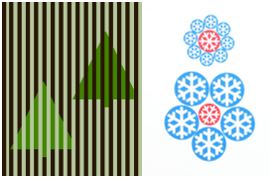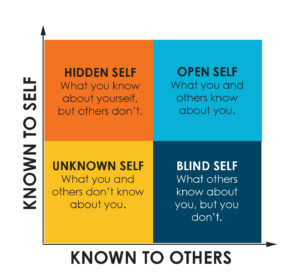Ahh, February… il mese dell’amore, the month of love. (Everything sounds better in Italian, si?)
This is the perfect time to share a few thoughts on Relationship Marketing.

I love this definition from Forbes magazine: “Relationship marketing is a strategy designed to foster customer loyalty, interaction and long-term engagement. It is designed to develop strong connections with customers by providing them with information directly suited to their needs and interests and by promoting open communication.”
Developing strong connections. YES! I’m all about that.
It is often said that 80% of your company’s profits will likely come from the top 20% of your customer base. And at the very top of that 20% are those wonderful people called “loyalists” or “advocates.” Loyalists talk up your brand, actively engage in promotions or brand activities and rarely switch to another company, even if discounts or incentives are offered. They are, in modern terms, your BFF’s! (tus mejores amigos!)
So it’s obvious that the more loyal advocates you have, the better off you are. Which leads us to this question: How do you create loyalists?
The Marketing Teacher explains that the idea that consumers can be moved along a continuum of loyalty using a number of integrated marketing communications techniques is often referred to as a loyalty ladder (or branding ladder).
From Prospect to Customer

Perhaps the hardest rung to climb is the first: motivating a prospect to make the first purchase and become a customer. In my business as a Moderator and research professional, I attend a fair share of conferences to stay up to speed on the latest techniques and to build partnerships. As a result, I meet a lot of people! Some are colleagues, but some are prospects – people I’d love to join me on the loyalty ladder!
Like everyone else, I leave each seminar with a briefcase full of business cards. But here’s where relationship marketing comes in. Here’s something I do:
- Before heading home, I purchase a bunch of postcards from the conference venue, and mail them to the people I met with a short note reminding them how we connected. Last month, I attended the Qualitative Research Consultants Association’s Annual Conference, and by the time my flight home landed, I had “Greetings from Arizona” postcards written to the prospects I met! (Note: No address on a card? Scan the postcard or do a little research! Simple fix).
Once you have a customer with one foot on the ladder, showing the love gets even easier!
- Your first business interaction is key, and we all know how to do this well.
- With your first transaction under your belt, don’t wait for an invitation for a second! Follow up promptly and personally to express your appreciation. One of my personal thank you gestures is sending a bottle of a Chilean wine called Santa Alicia (of course!) at the conclusion of a project.
Creating Advocates
We’re reaching the top of the ladder now, which is where it gets challenging again. How do we move customers along the continuum so they become our loyal advocates, telling others about us like they are part of our sales team? Tip: Show regular and consistent appreciation.
- Keep an eye on your customer’s social media posts. Look for reasons to send them a note congratulating them on quarterly sales or the launch of a new product. Don’t be shy about reminding them how you can help them in their success. Use LinkedIn or other venues to recommend them and send them leads that may be helpful.
- Rather than sending Christmas cards that may get lost in the busy-ness of the season, I send clients Thanksgiving cards to express appreciation. Can’t wait until next Fall? A colleague sends a Spring message thanking them for helping her business grow and blossom.
Final Thoughts
Understanding why your customers are loyal to your brand gives your organization incredible leverage and knowledge you can really use. Proctor & Gamble understood this when they hired Insights360 to research how to transfer the loyalty their Hispanic customers had for a toothpaste brand in their home country to the U.S. market. And likewise, we learned how to leverage this brand loyalty to motivate purchases of other items in P&G’s suite of products.
So don’t let the Month of Love (il mese dell’amore) go by without showing some love to your customers! You’ll be glad you did!
Ciao!

 Which tree is a darker green color?
Which tree is a darker green color? One tool I’ve found interesting over the years is the Johari Window, a self-awareness model developed by Joseph Luft and Harrington Ingham in 1955. The four quadrants illustrate how information about us can be known in varying degrees by ourselves and others.
One tool I’ve found interesting over the years is the Johari Window, a self-awareness model developed by Joseph Luft and Harrington Ingham in 1955. The four quadrants illustrate how information about us can be known in varying degrees by ourselves and others.